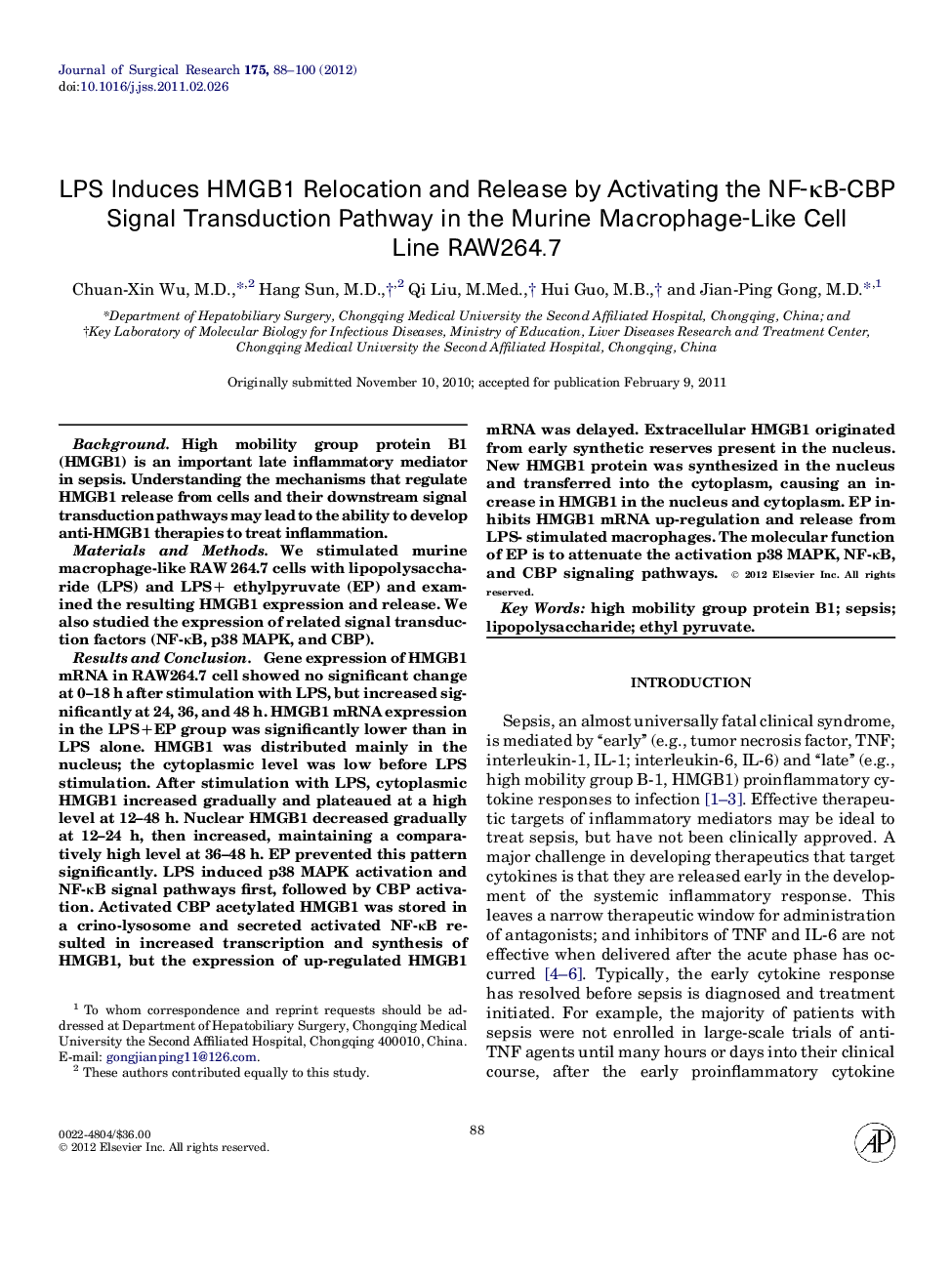| کد مقاله | کد نشریه | سال انتشار | مقاله انگلیسی | نسخه تمام متن |
|---|---|---|---|---|
| 4301330 | 1288436 | 2012 | 13 صفحه PDF | دانلود رایگان |

BackgroundHigh mobility group protein B1 (HMGB1) is an important late inflammatory mediator in sepsis. Understanding the mechanisms that regulate HMGB1 release from cells and their downstream signal transduction pathways may lead to the ability to develop anti-HMGB1 therapies to treat inflammation.Materials and MethodsWe stimulated murine macrophage-like RAW 264.7 cells with lipopolysaccharide (LPS) and LPS+ ethylpyruvate (EP) and examined the resulting HMGB1 expression and release. We also studied the expression of related signal transduction factors (NF-κB, p38 MAPK, and CBP).Results and ConclusionGene expression of HMGB1 mRNA in RAW264.7 cell showed no significant change at 0–18 h after stimulation with LPS, but increased significantly at 24, 36, and 48 h. HMGB1 mRNA expression in the LPS+EP group was significantly lower than in LPS alone. HMGB1 was distributed mainly in the nucleus; the cytoplasmic level was low before LPS stimulation. After stimulation with LPS, cytoplasmic HMGB1 increased gradually and plateaued at a high level at 12–48 h. Nuclear HMGB1 decreased gradually at 12–24 h, then increased, maintaining a comparatively high level at 36–48 h. EP prevented this pattern significantly. LPS induced p38 MAPK activation and NF-κB signal pathways first, followed by CBP activation. Activated CBP acetylated HMGB1 was stored in a crino-lysosome and secreted activated NF-κB resulted in increased transcription and synthesis of HMGB1, but the expression of up-regulated HMGB1 mRNA was delayed. Extracellular HMGB1 originated from early synthetic reserves present in the nucleus. New HMGB1 protein was synthesized in the nucleus and transferred into the cytoplasm, causing an increase in HMGB1 in the nucleus and cytoplasm. EP inhibits HMGB1 mRNA up-regulation and release from LPS- stimulated macrophages. The molecular function of EP is to attenuate the activation p38 MAPK, NF-κB, and CBP signaling pathways.
Journal: Journal of Surgical Research - Volume 175, Issue 1, 1 June 2012, Pages 88–100